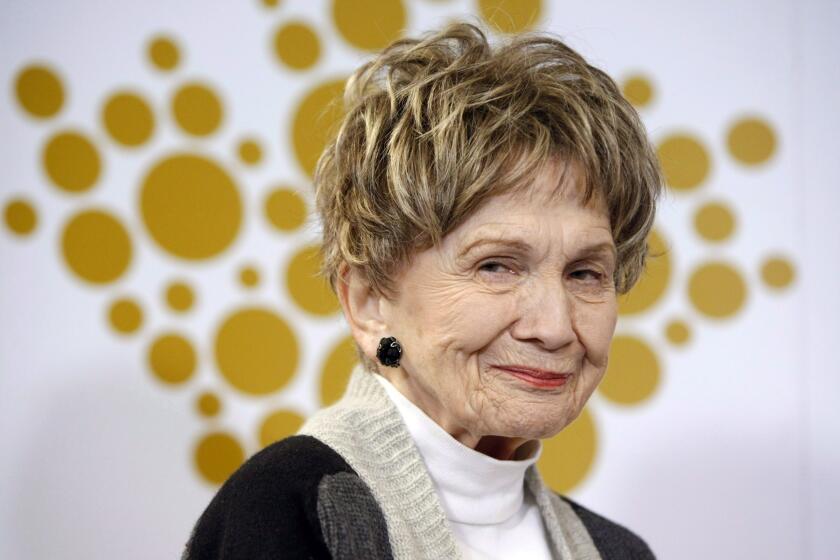Once Shunned as Racist, Storybook Bestseller in Japan
A writer’s death can do wonders for pushing that back catalog. Less drastically, a few books acquire cachet by being banned.
Which may help explain why a reissue of “Little Black Sambo,” a turn-of-the-20th century illustrated children’s book attacked as being racist, is on the bestseller lists in Japan this spring.
The Japanese edition of “Sambo” was a big favorite here, from the time it was introduced in 1953 until it was yanked from bookstores in 1988 after a swift and effective anti-racism campaign.
The rap against it in Japan echoed that heard in the West years earlier: Sambo was a racist term for American blacks and illustrator Frank Dobias’ portrayal of the main character, with his bulging white eyes and exaggerated, thick lips, was tantamount to a boy drawn in blackface.
In April, Zuiunsha, a small Tokyo publisher specializing in reprints, bet that there was still a market for a book that had charmed generations of Japanese youngsters who, as adults, were unable to find the book to read to their own children.
The market proved him right. Zuiunsha reportedly has sold 95,000 copies in two months since bringing out “Chibikuro Sambo.” Despite being a child’s read at a thin 16 pages, “Sambo” sits among the top five adult fiction bestsellers at major Tokyo book chains.
“Some people buy it out of nostalgia,” said Tomio Inoue, Zuiunsha’s president, who gambled that he wouldn’t face a backlash for breaking the informal ban when he picked up the rights to the book. “Many readers didn’t know why it was out of print. They missed the book.”
“Sambo” has returned to shelves with few objections in a country where blacks remain extremely rare. One complaint has been published in an English-language newspaper, written by an African American resident of Japan. An online petition against the publisher garnered 263 signatures by Saturday, most of them from non-Japanese, many from abroad.
That is a far cry from 1988, when a mainly American campaign drove the book off Japanese shelves. The undoing was triggered by a report in the Washington Post that noted the popularity of a book “that most Americans thought had died a well-deserved death years ago,” as well as several Sambo-related doll items on sale in Tokyo department stores.
The article spawned a letter-writing campaign in Japan from the Assn. to Stop Racism Against Blacks, which was later discovered to be essentially a one-family enterprise.
But it sparked a bigger backlash in Washington, where there were accusations of entrenched racism against blacks among the Japanese and protests were held at the Japanese Embassy and threats made to boycott its cultural exports.
This was at a time when Japan, with its then go-go economy, was perceived to be a threat to the United States. Fearing the book was adding a culture war to the trade disputes with Washington, Japan’s Foreign Ministry had a word with the publishers, suggesting that a picture book and its spinoffs were not worth wider trouble.
Japanese publishers withdrew the book in less than a week. The dolls went too.
In Nagano City, the education board sent letters to every kindergarten asking parents to burn any copies of “Little Black Sambo” they might have at home.
Of course, Nagano’s civic leaders had their eyes on much more than a children’s book. The city was then bidding for the Winter Olympics and was eager to appear cosmopolitan.
“Nagano was very nervous about its reputation,” said Kazuo Mori, an educational psychologist at Shinshu University in Nagano. “The reaction was to be overcautious.”
But Mori said most Japanese were surprised to learn that “Little Black Sambo” had racist overtones. “It never occurred to us,” he said. “It was just a story.”
Intrigued by the controversy, Mori conducted academic experiments involving readers that he said showed the Japanese take nothing racist away from reading “Little Black Sambo.”
He offered a group of kindergarteners and another of senior citizens a look at two versions of the story: one with the Dobias’ drawings, another with the central character drawn as a black Labrador puppy. The test groups found both illustrated versions equally amusing.
Ergo, no racism, Mori concluded.
He then fine-tuned the drawings of the puppy, found himself a publisher, and in 1997 released a “nonracist” version of the tale, titled “Chikiburo Sampo.”
That version has sold more than 50,000 copies.
“It’s a sort of hit,” he says with a laugh. “I bought a car.”
The original “Little Black Sambo” was published in London in 1899 and in the United States a year later. Written by Helen Bannerman, a Scot living in India, it recounts the adventure of an Indian boy who encounters tigers and bargains for his life by surrendering his fine clothes.
But the tigers, each with a different garment, fight over who is the grandest among them, pursuing each other in frenzied circles until they dissolve into pools of butter.
To its defenders, Sambo is heroic and the story a harmless fantasy. “The little boy faces dangerous situations, but he manages to escape every time by his quick thinking,” Japanese publisher Inoue says. “Sambo was small but smart.”
Bannerman did not retain the copyright to her work, which she had illustrated herself, and in subsequent editions other artists were commissioned, most portraying Sambo with the exaggerated lips and simpleton look that critics found cartoonish and derogatory. (It has never been definitively explained why artists opted for African characters to illustrate a story set in India.)
After World War II, as the West became more racially sensitive, Bannerman’s book ran afoul of the NAACP and other campaigners who pointed out that Sambo had been a racist epithet for blacks since the mid-18th century.
The book was banned in many U.S. schools, and by the 1960s had been chased out of most libraries and gradually disappeared from bookstores. Recent editions with different titles and illustrations are available online.
But a Sambo boom was on in postwar Japan. The prestigious Iwanami Publishing Co. issued a version of Bannerman’s story, using Dobias’ drawings that had been done in the 1920s for an American edition. Although there were as many as 40 other Japanese editions, the Iwanami version became the most popular, reportedly selling as many as 1.2 million copies.
The Japanese read it at bedtime and they read it at school. And the Dobias drawings were a hit in a country that loves animated characters with garish features, from the futuristic Pokemon crew to the stylized, frightening children with ballooning heads drawn by pop artist Yoshitomo Nara.
“The Japanese people can be racist when it comes to Koreans living here -- it’s well known,” said psychologist Mori. “But racist against blacks?
“We have no experience in dealing with black people,” he continued. “Where would we get it from?”
*
Special correspondent Naoko Nishiwaki contributed to this report.
More to Read
Sign up for our Book Club newsletter
Get the latest news, events and more from the Los Angeles Times Book Club, and help us get L.A. reading and talking.
You may occasionally receive promotional content from the Los Angeles Times.







